We’re getting through Turkey Day 2017 with our favorite food writing about hot (edible) dates, the ugliest noodles this side of Jakarta, copious amounts of mezcal—and the camel-milk hangover cure.
It’s nearly time for the annual U.S. tradition of turkey, stuffing, and desperately trying to avoid discussing politics with your drunk uncle. We here at Roads & Kingdoms are continuing our annual tradition with a literary potluck.
We’ve each selected a dish from some of our favorite food stories of the year. Join us for frito pie and camel milk, Chinese peppers and Ukrainian sweet rolls, as we revisit the tales that took us to Saudi Arabia, small-town Britain, and beyond. Hopefully, they will give you something to discuss over mashed potatoes and gravy that won’t bring anyone to blows. Happy Thanksgiving!
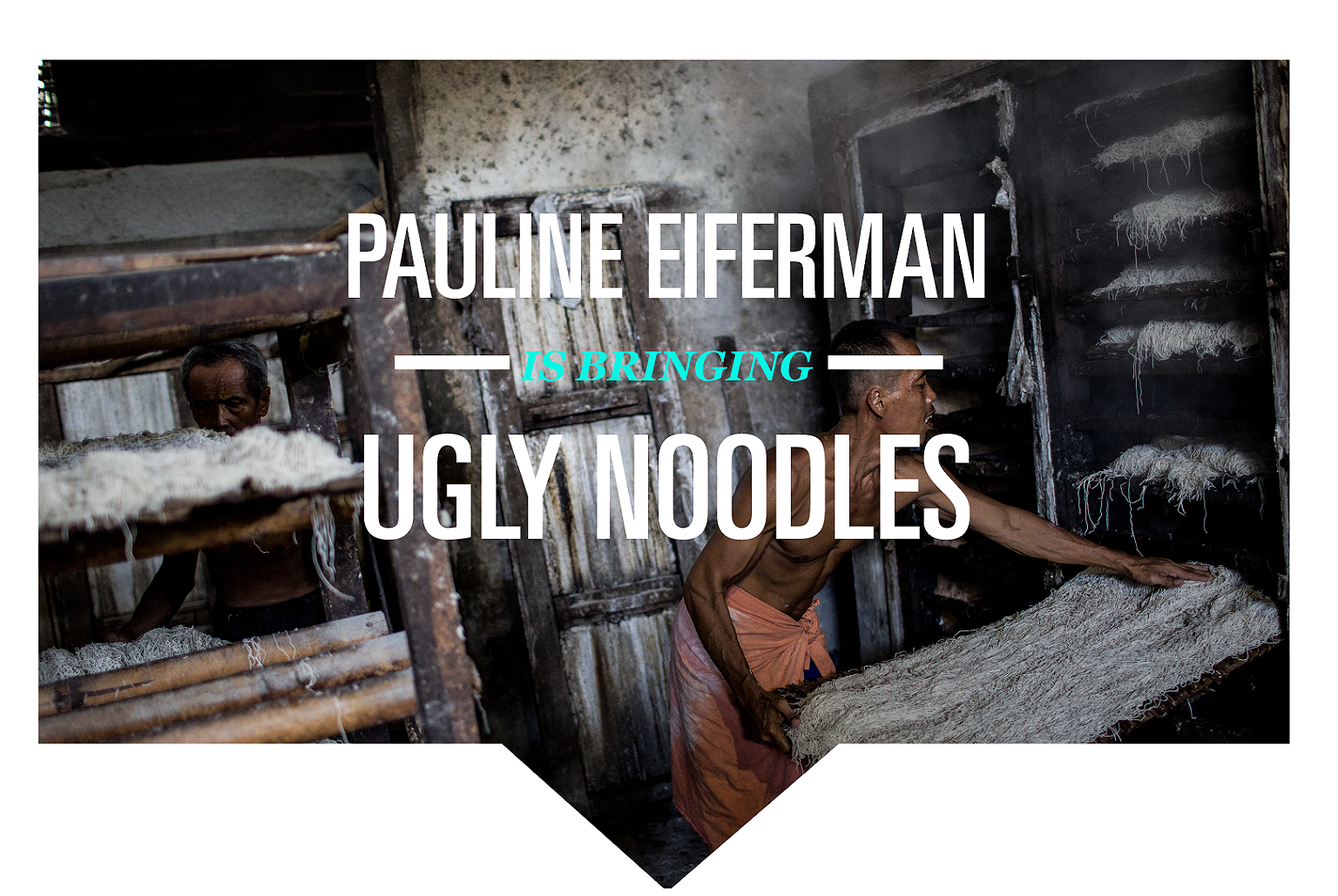
How the Noodle Gets Made
I’m bringing ugly noodles from Bendo, a tiny village on the Indonesian island of Java. It’s where photographer Agung Parameswara met Yasir Feri, the owner of a noodle factory so legendary that even the former president of Indonesia gets a batch of 100 pounds delivered to him every month. The noodles get their “ugly” moniker because they’re made with cassava instead of the traditional mixture of rice and corn, which gives them a gray color. But they look pretty damn tasty in Parameswara’s photos. Indeed, friends, I must apologize in advance: despite my recent naturalization as an American citizen, I still struggle to get excited about eating turkey (don’t even talk to me about cranberry sauce). Most of my Thanksgivings are spent around takeout food from the few restaurants that remain open during the holiday. So, ugly noodles it is. I’ll work out the details with Feri’s delivery guy.
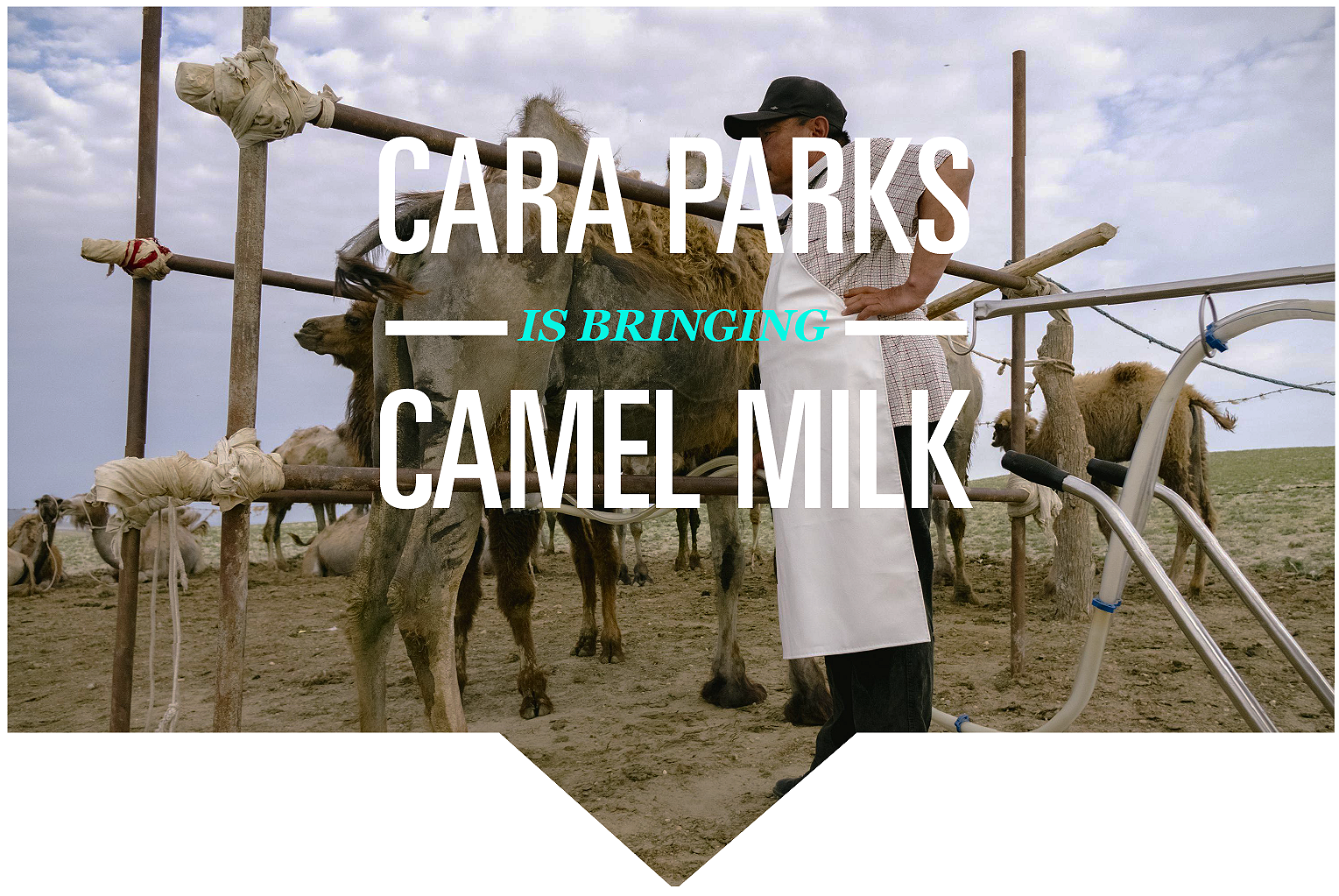
China’s Camel-Milk Mogul
Writer Christopher St. Cavish traveled to the deserts of western China to track down what is often hailed as a miraculous drink: camel milk, the cure to myriad ailments and preventer of hangovers. The only problem? It doesn’t seem to work. While St. Cavish doesn’t find a hangover remedy, he does find a place transformed by China’s only camel milk factory, which has lifted local people out of poverty largely due to the determination of one man: China’s camel milk mogul. Come for the drunken exploits; stay for the hospitality, hope, and kindness that runs through this account. Sounds like Thanksgiving to me!
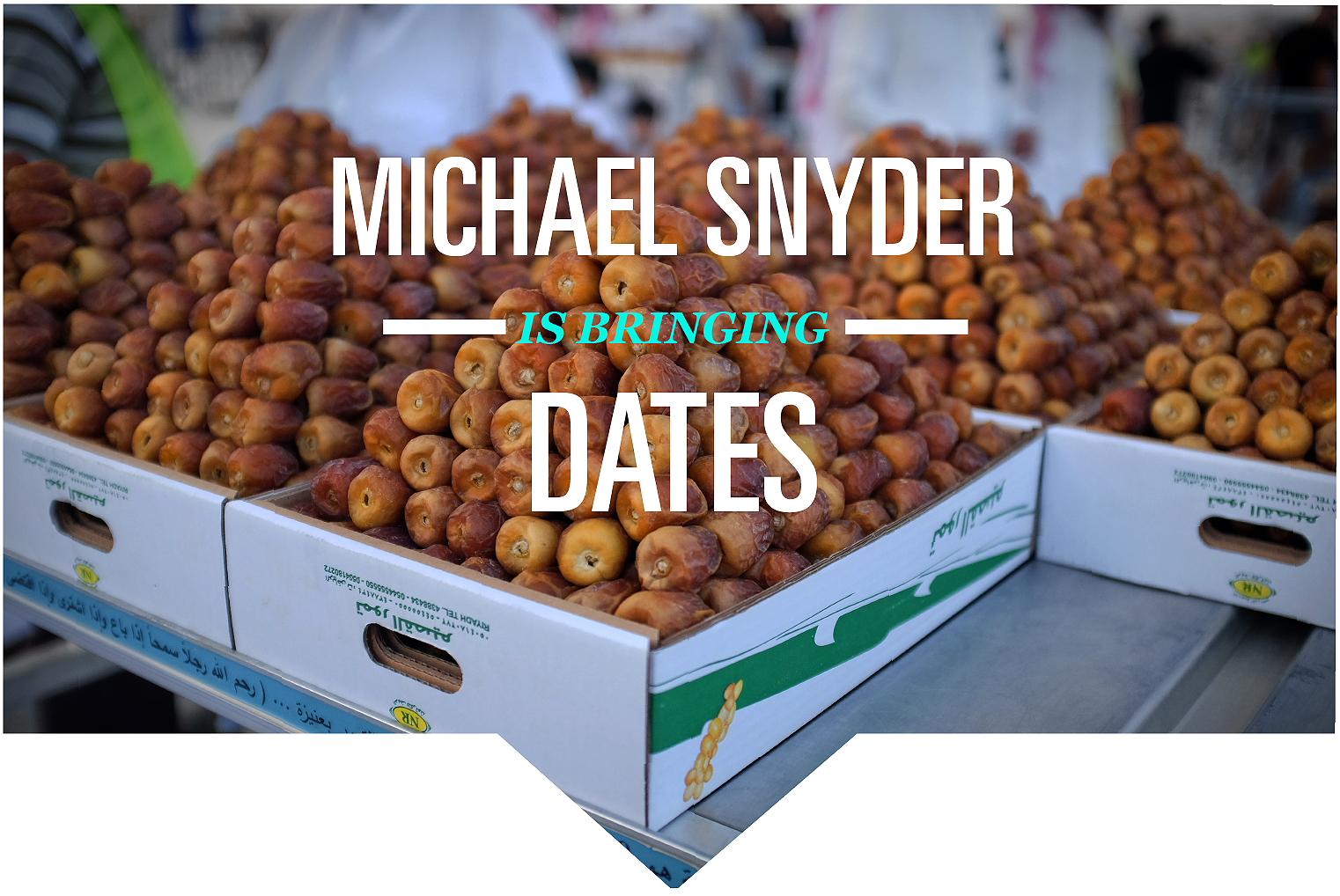
Hot Dates in the Saudi Desert
This year, I loved reading about Andrew Leber’s time at a date auction in Saudi Arabia. During my sophomore year of college, my suitemate, Fatima, received a giant box of dates from her family in Abu Dhabi. Fatima’s family had moved back to Abu Dhabi from New York, where her father had for years served as the U.N. ambassador. As a gift for Ramadan, her parents sent a giant box stuffed with bag after vacuum-packed bag of sugar-crusted fruit. When Ramadan ended and Fatima no longer needed the dates to break her fast, she turned them over to me. For the rest of that year, I ate dates every morning with breakfast, and it always felt special, like a holiday. Like pineapples and mangos, dates are a message as much as a food, a way to say welcome and thank you, so perfect and unexpected. I spent that year under the impression that Fatima had given me her dates because she wasn’t all that interested in eating them herself. In retrospect, I think it was because she understood what I didn’t, which is that dates were made to be given.
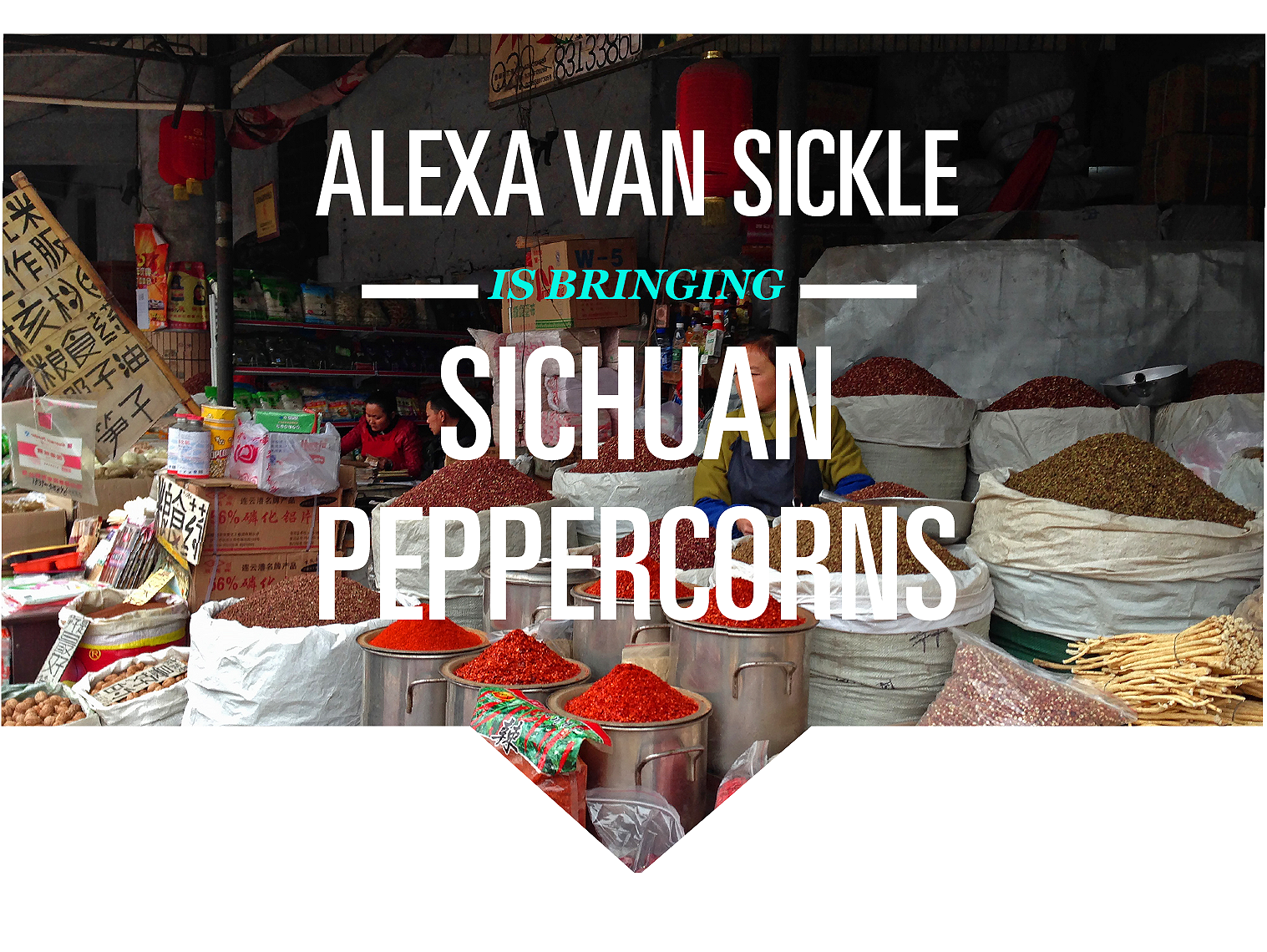
Where the Peppers Grow
I don’t remember the first time I tasted Sichuan peppercorn, a long-standing food obsession of mine. (Sadly, it wasn’t in Sichuan province ten years ago, when my train from Lhasa to Beijing made only the briefest of stops in Chengdu to let off the panda bear-seeking tourists.) This bizarre spice combines always-welcome heat with an appealing (to me) tingling sensation and unusual floral flavor—the Chinese term mala describes the combination of spicy hot (la) and the citrus tingle associated with Sichuan flavors (ma.) For years I have sought out mala-heavy dishes. Naturally, I became obsessed with Where the Peppers Grow, a dispatch from mala expert and chronicler Taylor Holliday, who went to Hanyuan in Sichuan province for the peppercorn harvest, got to do some serious peppercorn tasting, and explored the spice’s fraught journey to American plates. It’s a little harder to find, but mala may just be on a menu near you (and not just at R&K Thanksgiving.) I know at least one great place to get the mouth-numbing fix in the U.S., at Szechuan Impression in East Los Angeles. It’s BYOB–and we failed to bring–but the peppercorn-numbing was a pretty good substitute for the fizzy beer that goes so well with the mala-laden fried chicken.
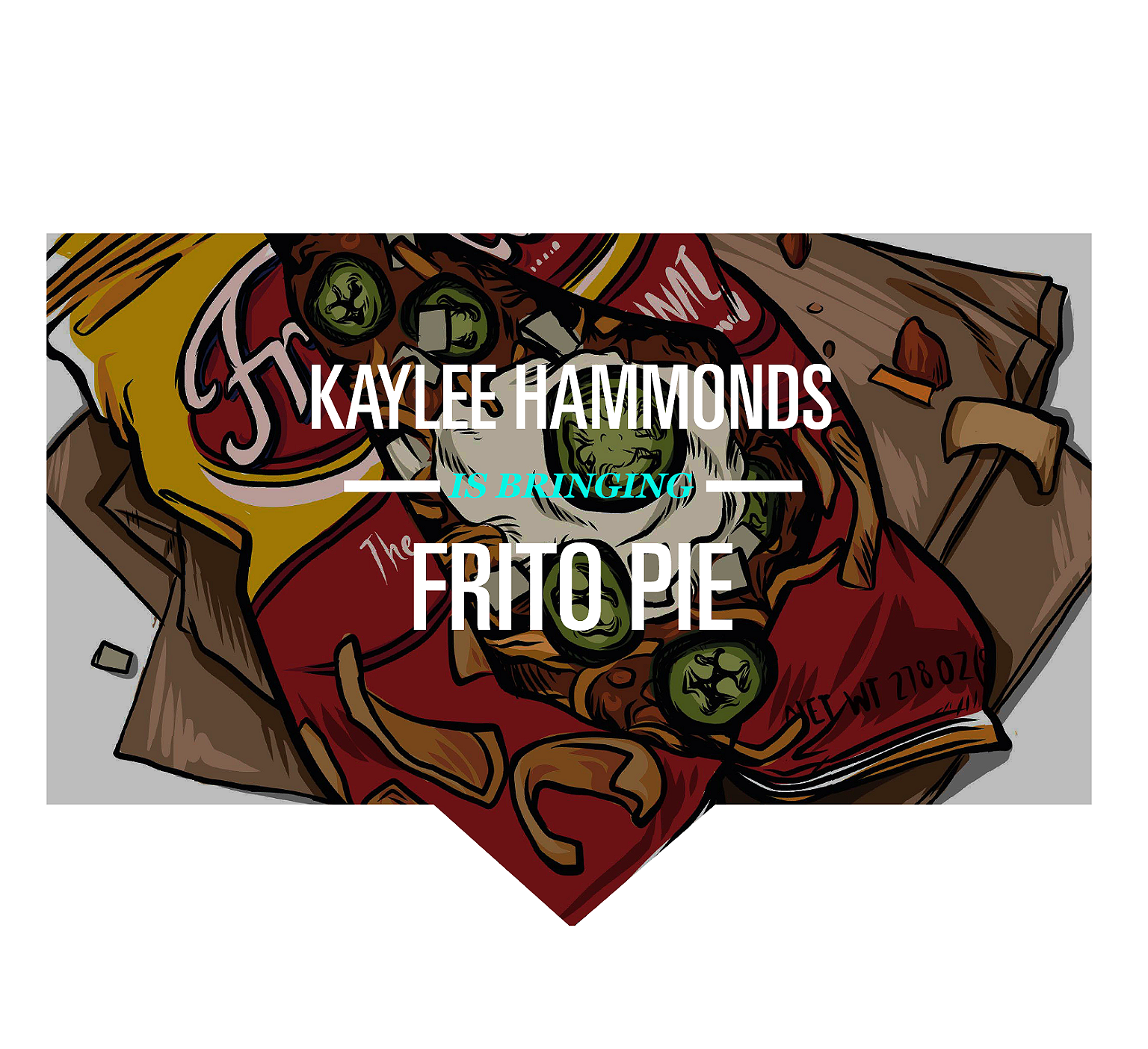
The Reconquista of the American Plate
In the shit-show that is the country I inhabit, my emotional eating tendencies are grateful for junk food. This article by Bill Esparza about the many ways that Mexican food has evolved as it sprawled out over the United States is one of the best of its kind. Maybe some folks need a little reminding about how that food is interwoven into the fabric of the mythical “American” diet. At any rate, this year, I bring Frito pie to the table. It’s a nostalgic food—it conjures up Little League games and Saturday afternoons at church events—but it’s also something delicious that my bat-shit crazy conservative family can agree on. I can’t get them to eat anything resembling non-big Ag processed food, so this year, I’m giving up, giving in, and busting out cans, bags, and other foods that we’ve subsidized the hell out of.

Can Mezcal Survive Being Popular?
I’m bringing mezcal. First, because I’m hosting both my parents and my in-laws in a tiny New York City apartment, so I’ll be in need of hard alcohol. Second, because it’s 2017, so I’ll be in need of hard alcohol. As my family gets together on a holiday that celebrates the Anglo tradition of stealing land I’ll be thinking about our country’s obsession with borders—defining and defending them, hiding money on the other side of them. Mezcal feels like an appropriate antidote to this strange holiday in this strange country at this strange time.
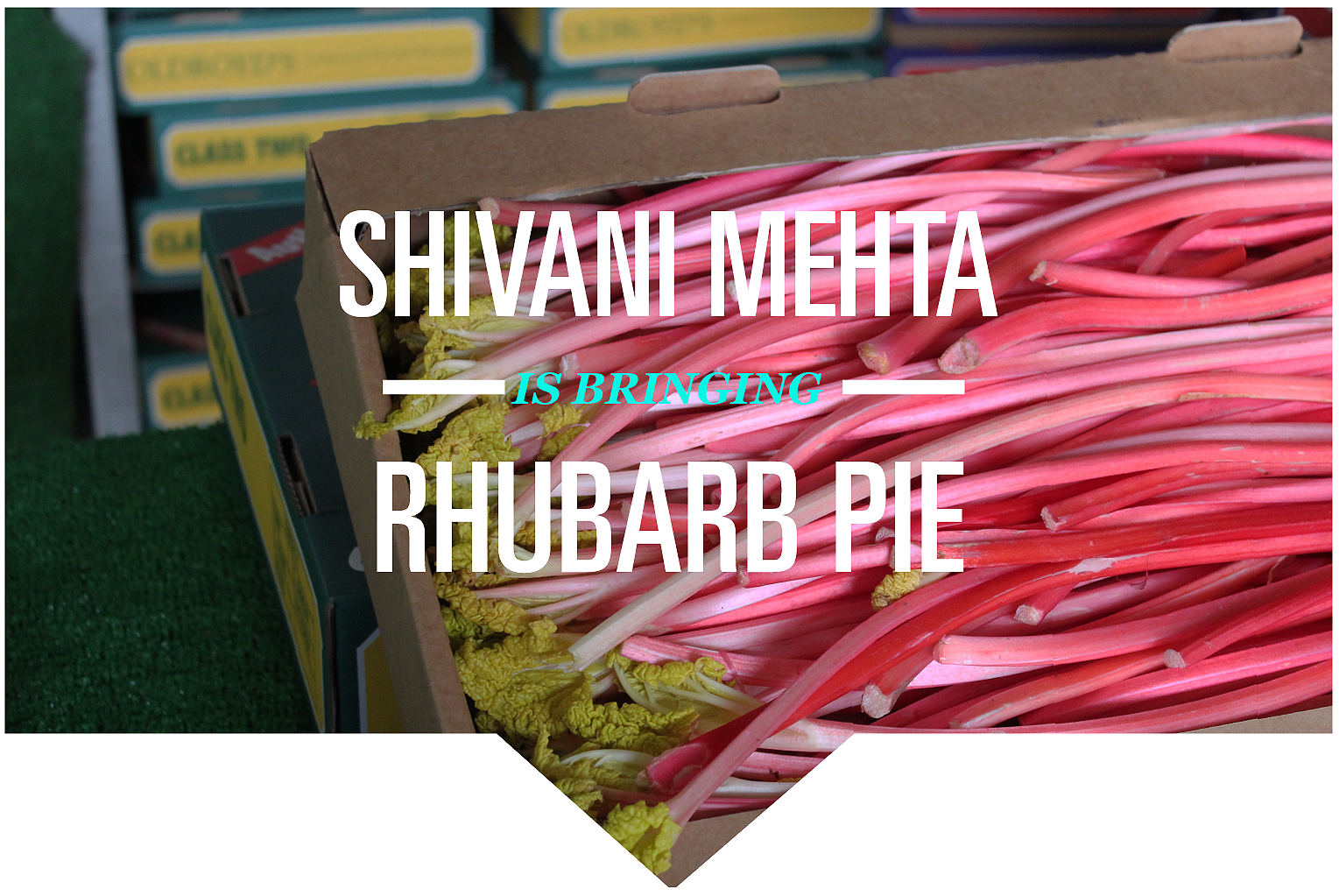
The Dark State of British Rhubarb
This year, I’m bringing rhubarb pie. I’ll be in England—home of the famous Yorkshire Forced Rhubarb for Thanksgiving, spending time in various places with names that end in “ire,” and it feels like nothing short of a fairy tale. I grew up daydreaming of the treacle tarts, clotted cream, scones, and coconut macaroons that I read about in old British children’s books, far from what was available in Mumbai. Craig Ballinger’s account of forced rhubarb lends it an almost mythical, magical quality that tugs at my childhood fantasies. Just picture it: “In the darkness of the forcing sheds, tea-lights cast a faint light on a crop of Timperley Early, the first rhubarb variety of the season.”
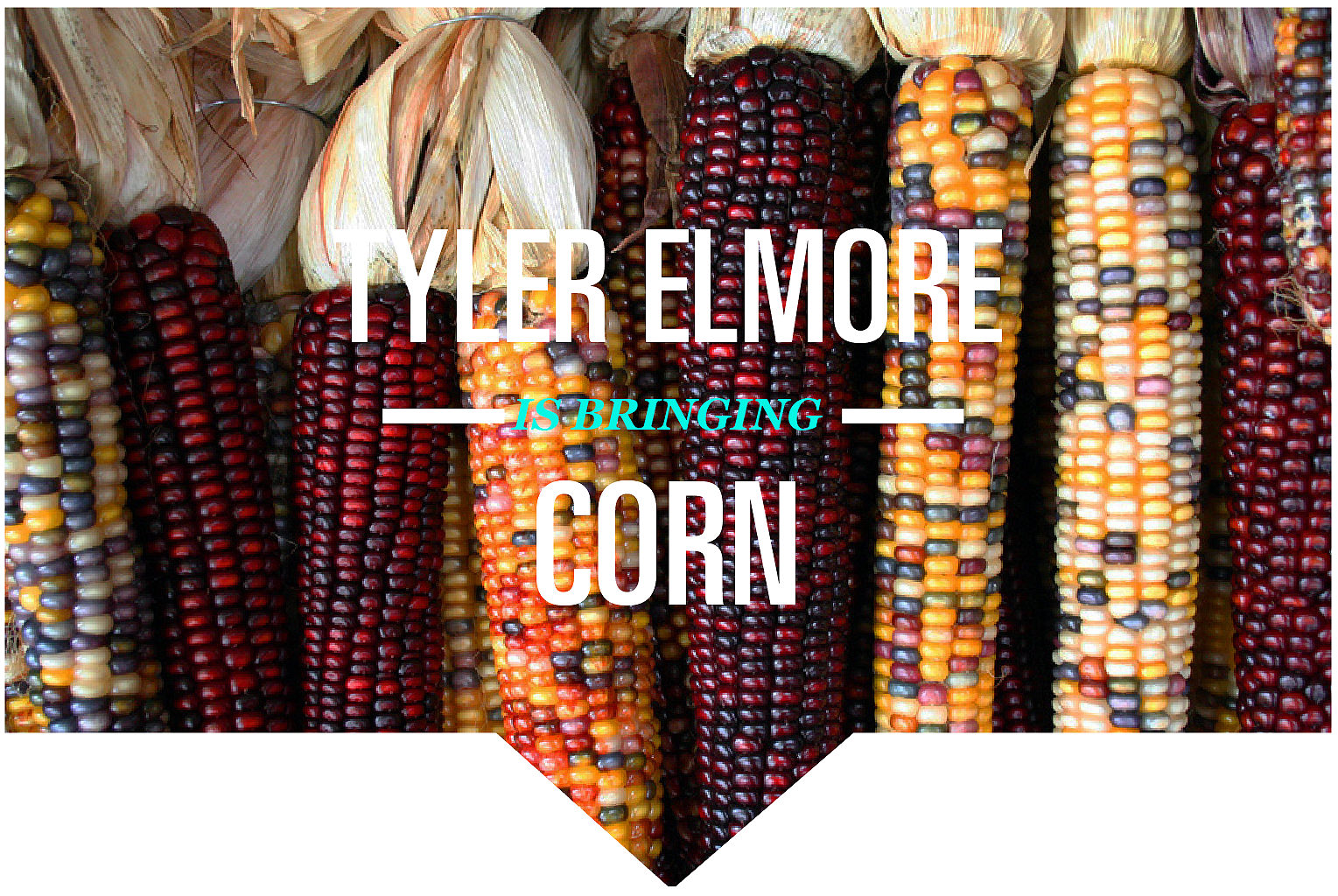
Can Mexican Corn Be Saved?
I’m bringing corn. I have never actually had corn on Thanksgiving, even though I learned in school that corn was shared on the very first Thanksgiving. Even growing up in a town where our main commodity is corn (we had a “Corn Fest,” for Pete’s sake) we never ate corn on Thanksgiving. But I can’t think of a story more apropos of this holiday than this one on the disappearance of the heirloom varieties of corn in Mexico due to the involvement of American corporations like Monsanto trying to monopolize the crop and the overall American influence on Mexico’s diet. If this isn’t a direct metaphor for this holiday and what was done to the indigenous people of America, I don’t know what is.
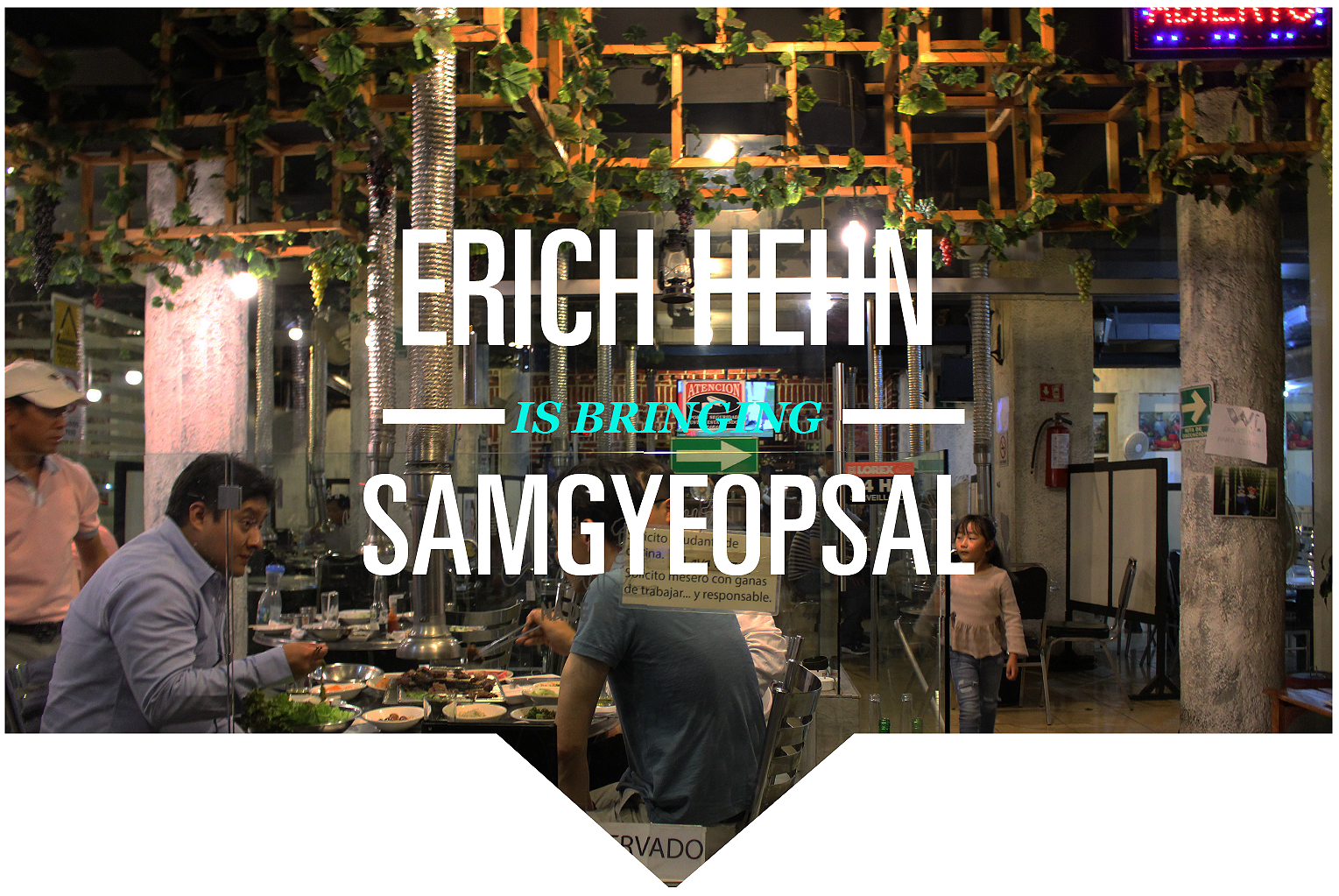
Seoul of the City
I’m bringing thick, fatty strips of pork belly, and I’m not even going to cook it. That’s right, you can cook your own meat right at the table. Korean BBQ at an American Thanksgiving table might seem about as fitting as finding it in a Mexico City neighborhood, but as Julie Doherty Meade points out in her “Seoul of the City” that’s exactly where you’ll find it at the thriving Korean-owned spot, Na De Fo, in the Zona Rosa district. Now, if you’re already well-acquainted, finding Korean food anywhere in the world today is no real surprise. Korean BBQ is more than a meal; it’s an event. And the thick-cut pork belly version, samgyeopsal, is king of the concept. Add copious amounts of beer and whatever harder stuff you favor to the mix of banchan side dishes customarily found with such a meal, and the ritual will quickly make sense as a new Thanksgiving staple. After a few rounds more of traditional drinking games, you might just find yourself plopping god-knows-what atop your lettuce-wrapped pork belly while chiding Grandma, mouth already full, for pouring her own shot of soju out of turn. Good times.
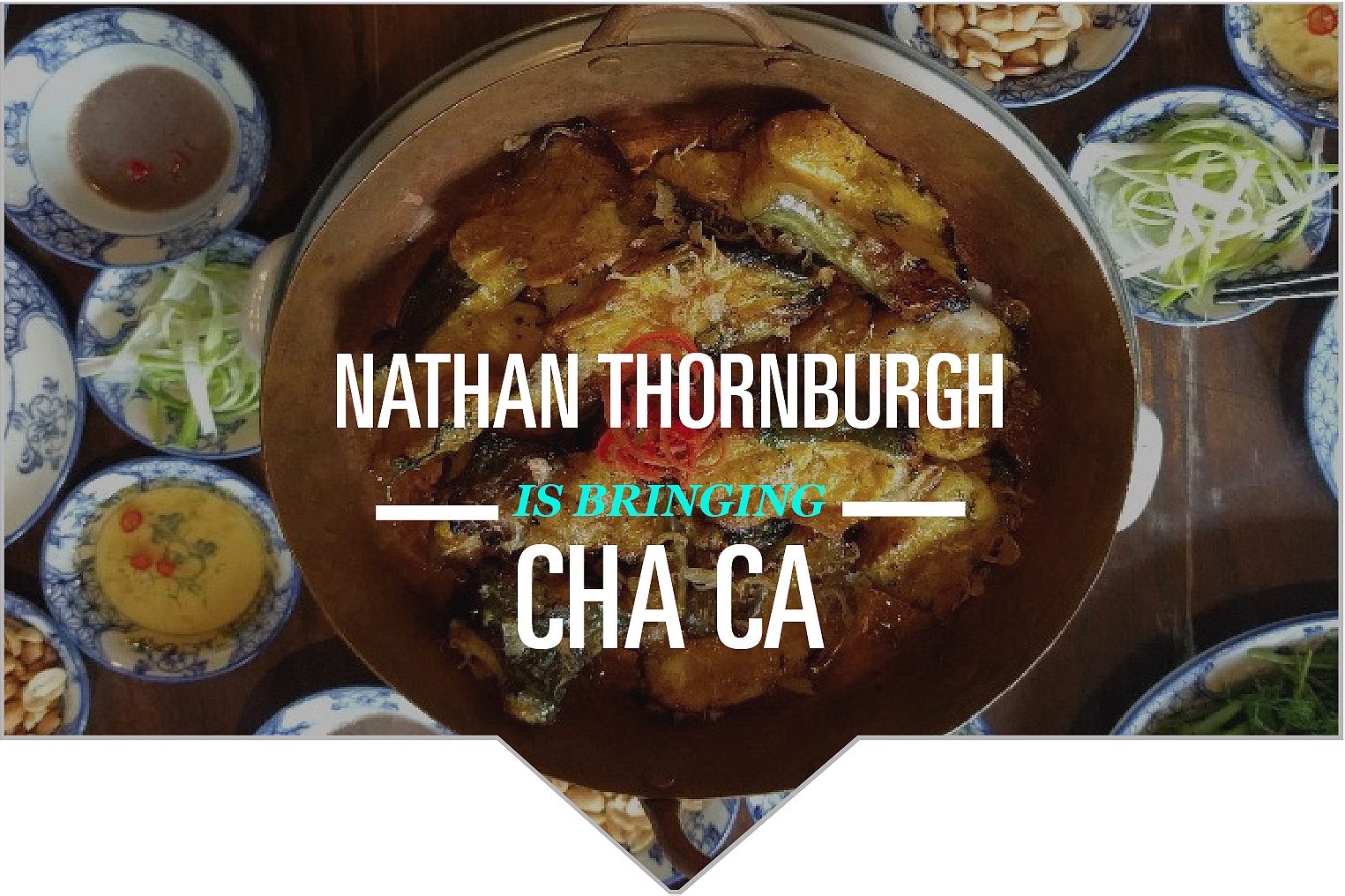
The Perfect Dish: Hanoi
Color is the best part of Autumn, the season of red, orange and ochre in between sunbleached summer and dirty-ice grey winter. So I’m bringing color to this potluck, from an unexpected source: catfish, normally a gloomy thing dredged from the murk, but made radiant in chef Nguyen Phuong Hai’s version of the classic Hanoi dish Cha Ca. Executive Editor Cara Parks tracked this dish down in Hanoi for our Perfect Dish video series (watch the full, rad episode here). It is exactly the holiday color wheel you want it to be: bright yellow turmeric, deep red peppers, light green dill. Pure eye candy for the table, and a way better centerpiece than, say, the festive garbage clam.